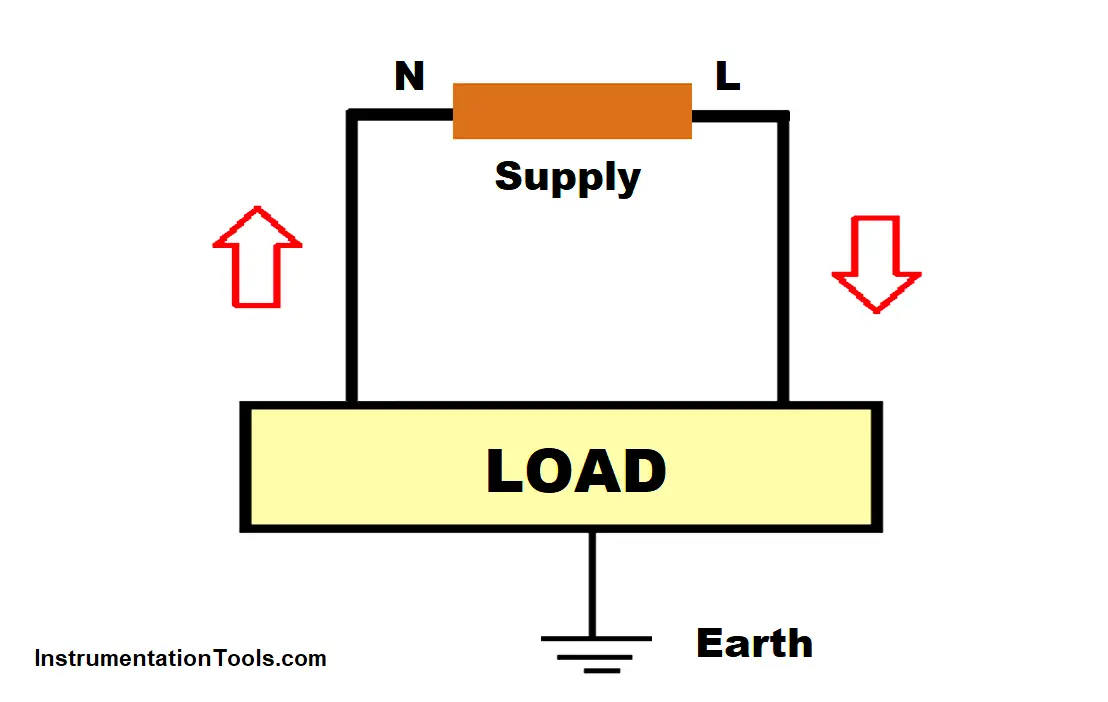Whenever we use electricity, we know about the wires used in it – phase, neutral, and earth. Actually, normal people do not care about what is going on in these wires and they just need electricity to use. But, the electrical engineers know the real fact about these wires. What separates them in their definition is also necessary to understand.
Mostly, we think that neutral and earth are the same types of connections; but it is not. There are differences between them and it is also to be noted that they are not connected with each other.
In this article, we will learn why the neutral and earth wires are separated from each other in an electrical system.
First of all, as discussed, we know that an electrical connection has three wires – line (phase), earth, and neutral. As per the basics of electricity, current flows from a positive terminal to the load and then back to the negative terminal.
Refer to the below image for understanding. A power supply has two terminals – positive and negative. The positive terminal is used to connect the line wire and the negative terminal is used to connect the neutral wire.

When the power supply is turned ON, the electricity flows through the phase wire to the load’s positive terminal. The return current is carried from the negative terminal of load to the negative terminal of the power supply, through the neutral wire.
The neutral wire is thus termed as the return current carrying path. As the current is consumed by the load, a very minimal current (almost equal to negligible) is present in the neutral wire.
Now, the load can be any metallic device. There are chances many times or most frequently that some current can lead to the metallic body of the device. If anyone accidentally touches the body, then he can get an electrical shock. If there is some means to nullify this leakage current, then this chance of shock can be eliminated. This is done by an earthing wire. The earth wire is connected to the body of the device, to the earth pit.
An earth pit is dug in some areas outside the electrical device’s presence. The earth wire goes from the body to this pit dug. Any leakage current is then carried from the ground wire to the ground point in the earth, as the earth has zero potential.
The grounding connection thus provides a safe path for the leakage current to flow outside and kill itself. It is to be noted that the leakage current can also be produced by external electromagnetic forces or surges acting on the body.
Now that we have understood the difference between both these wires, let us see why they should not be bonded together. It must have been clear that the neutral wire is just required to complete the path and the ground wire is required to provide safety. Though both have minimal current, their purpose is different.
If any ground fault occurs, like ground leakage, it needs a path to carry this current to the ground pit. This is done by ground wire. If this wire is bonded with the neutral wire, then as the neutral wire too offers a low impedance path, the leakage current will flow in both wires. This will immediately damage the circuit. This is because, a circuit is designed to carry a certain rated amount of current, and any increase in current can trip the circuit.
The same thing can reverse happen with the ground wire. As the ground connection is just meant for safety purposes, the return current of the neutral wire will also flow to the ground wire; and can hamper the earth pit potential. This is extremely dangerous because if the earth is only having potential, then there will be no protection for any device connected to it. All the circuit breakers related to ground protection will trip frequently and electricity supply will be hampered to a great extent.
It is for these reasons that it is not required to connect both these wires together, even though they have very less current in them.
If you liked this article, then please subscribe to our YouTube Channel for Electrical, Electronics, Instrumentation, PLC, and SCADA video tutorials.
You can also follow us on Facebook and Twitter to receive daily updates.
Read Next:
Open Telemetry is a framework for collecting data in cloud-native applications including tracing, metrics, and…
This article is about controlling the Pneumatic cylinder and Pneumatic motor in the assembly line…
In this post, we will learn the basic requirements for a network switch to be…
The PLC panel and MCC panel interface signals are start, stop, run feedback, trip, local…
In this article, we are going to discuss about shutter door control using induction motor…
Electrical Drives control the motion of electric motors. Motion control is required in industrial and…